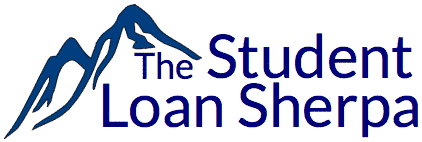Federal student loans have excellent perks like Public Service Loan Forgiveness (PSLF) and Income-Driven Repayment (IDR) Forgiveness. Borrowers who work for an eligible employer can have their student debt forgiven after just 10 years. Those who don’t work for a public interest employer usually must wait 20 years for forgiveness. Sadly, deferments and forbearances can complicate the student loan forgiveness clock.
Usually, if you pause your loan payments, it also stops the countdown to forgiveness. But, there are some exceptions to this rule.
A recent reader email perfectly shows how pausing your loan payments can create problems if you’re trying to get your student loans forgiven.
The Reader Email about the Student Loan Forgiveness Clock and Forbearances
Reader Gene writes:
Over the last seven years, I have made about 80 PSLF qualifying payments. During that time, I was on three months of Administrative (processing) Forbearance and three months of Hardship Forbearance.
Will the months of Administrative Forbearance or Hardship Forbearance count as qualifying payments?
Thank you!
Public Service Loan Forgiveness Basic Requirements
As seen in our detailed breakdown of the Basics and the Fine Print on Public Service Loan Forgiveness, time towards the required ten years, or 120 months, basically has three basic requirements:
- Eligible Loans – Not all federal loans are eligible. This includes certain Plus loans as well as FFELP loans. However, some loans can be made eligible through federal direct consolidation.
- Eligible Repayment Plan – Only specific repayment plans will count towards PSLF. The income-driven plans such as IBR, PAYE, and SAVE count, but the graduated and extended repayment plans are not eligible.
- Eligible Employer – Only employers that fall within the Department of Education’s definition of public service will count. This includes most government agencies and 501(c)(3) non-profits.
Because there is room for confusion within these requirements for PSLF, we suggest sending an employment certification form to your federal servicer every year. This is the best way to track progress and ensure you meet all the requirements.
Is my employer eligible for Public Service Loan Forgiveness? The exact eligibility requirements can be a bit complicated. This article breaks down the criteria for eligibility. Additionally, the Department of Education recently created the PSLF Help Tool to assist with the verification process.
Forbearances and Deferments and Time Towards Student Loan Forgiveness
Unfortunately for Gene, deferments and forbearances usually do not count towards the required 120 payments for Public Service Loan Forgiveness. Additionally, this time will not be eligible for the 20 or 25-year forgiveness programs under an Income-Driven Repayment Plan.
This is because a forbearance or deferment means that the borrower made no payment under an eligible repayment plan. (Note: $0 payments on an income-driven repayment plan can count.)
This rule can be incredibly frustrating in Gene’s case because he spent three months on an administrative forbearance. Administrative forbearances are usually the result of slow processing or errors on the part of the student loan servicer. Sadly, there is no mechanism in place to get these months to count towards PSLF.
Good News for Gene: The rules haven’t changed, but a new temporary exception will help Gene and millions of other borrowers.
Scroll down to the temporary exceptions to learn more.
The Massive Exception to the Rule
As part of the Covid-19 economic relief, all federal student loan payments were paused, and interest rates were set to zero.
Fortunately for borrowers, this deferment of payments will count towards Public Service Loan Forgiveness and Income-Driven Loan Forgiveness.
Borrowers don’t need to make extra payments for the time to count towards loan forgiveness.
The Temporary Exceptions
There are two notable temporary exceptions to the rule. One has expired, while the other is still available.
The Limited Waiver on Public Service Loan Forgiveness – (Expired)
In October 2021, the Department of Education announced rules for expanded Public Service Loan Forgiveness eligibility.
Under the expanded rules, called the Limited Waiver, active duty military service counted toward PSLF, even if the borrower was on a military deferment.
The Limited Waiver on Public Service Loan Forgiveness program ended on October 31, 2022.
One-Time IDR Account Adjustment – Expected Mid-2024
In April of 2022, the Department of Education announced an update to the rules for calculating progress towards forgiveness. Previous periods of deferments and forbearances may now count towards forgiveness under this one-time update.
Crucially, this time can also be used toward PSLF.
Most borrowers do not need to take any action to get this benefit, but consolidation may be required for borrowers with certain loans, such as FFEL.
Avoiding PSLF delays due to Forbearances and Deferments
Borrowers working towards PSLF should all be on Income-Driven Repayment (IDR) plans.
One of the key requirements to stay enrolled in the IDR plans is to certify your income yearly. Missing certification deadlines can cause delays in enrollment and force a forbearance or deferment. It can also cause an interest capitalization, which can be expensive.
Bottom Line
Federal student loans can be forgiven after ten years of public service or 20 years of IDR payments. Unfortunately, things don’t always go smoothly, and sometimes progress stops.
If you are working towards student loan forgiveness but your loans are on a deferment or a forbearance, the clock is likely paused.




